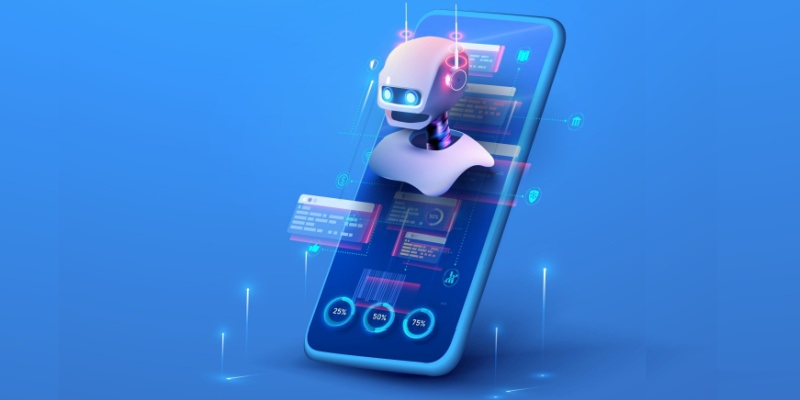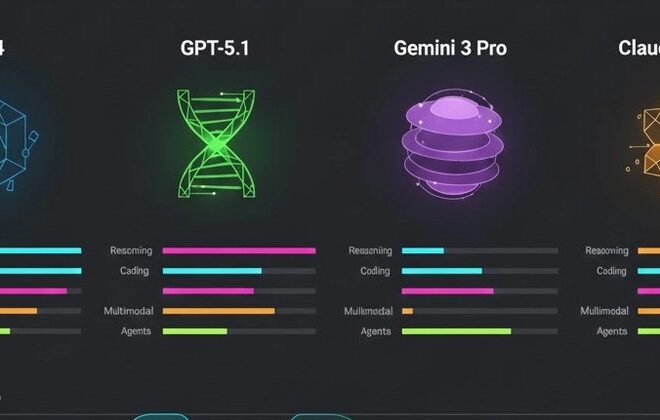
Beyond the Specs: How AI is Redefining the Latest Android Phones in 2024
The Dawn of the AI Smartphone: Are Hardware Specs Still King?
For years, the rhythm of the smartphone market has been predictable. Each new flagship cycle brought with it a familiar drumbeat of incremental upgrades: a slightly faster processor, an extra camera lens, a few more megapixels, and a brighter screen. This relentless pursuit of bigger numbers has led to a plateau, where the real-world difference between generations feels increasingly marginal. But in 2024, the narrative is dramatically shifting. The latest wave of Android Phones is no longer defined solely by its hardware prowess but by its intelligence. Welcome to the era of the AI-powered smartphone, where the most compelling new features aren’t physical components, but sophisticated software that learns, assists, and creates in ways we’ve only seen in science fiction. This evolution is transforming our devices from simple communication tools into proactive, personal assistants. This article delves into the latest Android News, exploring how manufacturers like Google and Samsung are leveraging artificial intelligence to create a new, smarter generation of Android Gadgets that are fundamentally changing how we interact with the world through our screens.
Section 1: The New Battleground: AI-Powered Features Take Center Stage
The spec war is over, and a new conflict has begun: the AI race. While Apple has been quietly integrating machine learning into iOS for years, the Android ecosystem has exploded with user-facing generative AI features that are both dazzling and genuinely useful. The conversation has moved from gigahertz and gigabytes to the magic of on-device processing and cloud-powered intelligence. This represents the most significant paradigm shift in mobile technology since the advent of the app store.
Google’s Pixel 8 Series: The AI Purist
Google has long positioned its Pixel line as the “smart” smartphone, and the Pixel 8 and 8 Pro are the ultimate expressions of this philosophy. Powered by the custom-built Tensor G3 chip, these devices are less about raw benchmark scores and more about enabling unique AI experiences. The headlining features are a testament to this focus:
- Magic Editor: This is more than just an object eraser. It’s a generative AI photo editor that allows you to not only remove unwanted elements but also reposition subjects, change the color of the sky, and fill in gaps with contextually aware, AI-generated imagery. It’s like having a professional photo retoucher in your pocket.
- Best Take: A common problem for group photos is that someone is always blinking or not smiling. Best Take analyzes a burst of photos and lets you swap out individual faces to create a single, perfect composite shot where everyone looks their best.
- Audio Magic Eraser: This groundbreaking feature uses AI to identify and isolate specific sounds in a video—like wind, crowd noise, or a barking dog—and allows you to reduce or eliminate them, leaving the desired audio, like a person’s voice, crystal clear.
These features demonstrate Google’s strategy: using AI to solve common, everyday frustrations, making the technology feel practical rather than gimmicky.
Samsung’s Galaxy S24 Series: AI for the Masses
While Google pioneered many of these concepts, Samsung, with its immense market share, has brought them to the mainstream with its “Galaxy AI” suite on the S24 series. Partnering with Google, Samsung has integrated powerful AI tools directly into its core applications, making them accessible to millions.
- Circle to Search with Google: Perhaps the most intuitive new feature, this allows you to circle, highlight, or tap on anything on your screen—an image, video, or text—to instantly perform a Google search for it without leaving your current app. See a pair of sneakers you like in an Instagram video? Just circle them to find out where to buy them.
- Live Translate: This feature breaks down language barriers in real-time. During a phone call, you can have a two-way conversation with someone who speaks a different language, with AI providing instant audio and text translations for both parties.
- Note Assist & Transcript Assist: For students and professionals, these are game-changers. Note Assist can automatically format, summarize, and even translate your handwritten or typed notes. Transcript Assist uses AI to transcribe voice recordings, identifying and labeling different speakers, and then providing a concise summary of the entire conversation.
Section 2: Under the Hood: The Hardware Enabling the AI Revolution
These incredible software features aren’t just magic; they are the result of highly specialized hardware designed specifically for the demands of artificial intelligence and machine learning. The traditional CPU (Central Processing Unit) is a jack-of-all-trades, but it’s not efficient at the parallel processing required for complex AI models. This has led to the rise of the NPU (Neural Processing Unit), a dedicated co-processor that acts as the AI brain of the modern smartphone.
The Rise of the NPU (Neural Processing Unit)
Think of it this way: a CPU is like a brilliant mathematician who can solve any problem you give them, but one at a time. An NPU is like an entire team of specialists who can work on thousands of tiny, related calculations simultaneously. This parallel processing power is exactly what’s needed to run the neural networks that power features like real-time translation or image recognition. By offloading these tasks to the NPU, the latest Android Phones can perform complex AI functions faster, more efficiently, and with significantly less battery drain. It also enables more processing to happen “on-device” rather than in the cloud, which is crucial for speed and privacy.
A Tale of Two Chips: Tensor G3 vs. Snapdragon 8 Gen 3
The two leading chipsets in the premium Android space exemplify this new focus on AI hardware.
Google’s Tensor G3: Found in the Pixel 8 series, Google’s in-house chip isn’t designed to win traditional speed tests. Instead, it’s custom-built to run Google’s own AI models with maximum efficiency. The NPU in the Tensor G3 is specifically tailored for the algorithms behind features like Magic Editor and Audio Magic Eraser. This tight integration of hardware and software is Google’s biggest advantage, allowing for a seamless and optimized user experience that competitors struggle to replicate.
Qualcomm’s Snapdragon 8 Gen 3 for Galaxy: Powering the Samsung S24 series, this chipset is an absolute powerhouse. Qualcomm has heavily invested in its NPU, the Hexagon Processor, making it capable of running generative AI models directly on the device. This allows the S24 Ultra to handle tasks like real-time translation and complex photo editing without a constant need for a cloud connection. The “for Galaxy” moniker indicates a slightly overclocked version, giving Samsung an edge in raw performance to power its ambitious Galaxy AI features and demanding games.
The key takeaway is that the most important specification on a modern smartphone datasheet may no longer be the CPU clock speed, but the performance and capabilities of its NPU.
Section 3: The Real-World Impact: How AI Android Phones Change Daily Life
Beyond the marketing buzzwords and technical specifications, how do these AI-powered Android Gadgets actually change your day-to-day life? The impact is subtle but profound, smoothing out friction points and unlocking new creative possibilities. Let’s explore a few real-world scenarios.
Case Study 1: The International Traveler

Sarah is backpacking through Japan. She doesn’t speak the language, and navigating train stations and restaurants is a challenge. With her Samsung Galaxy S24, she uses Live Translate to call and book a reservation at a traditional inn, with the phone translating her English to Japanese and the innkeeper’s Japanese to English in real-time. Later, she sees a sign with complex instructions at a temple. Instead of fumbling with a separate translation app, she simply points her camera at it, and the text is instantly translated and overlaid on the sign in her camera view. When she wants to ask a local for directions, she uses the Interpreter mode, which provides a split-screen view for easy, face-to-face translated conversations. The AI on her phone has transformed a potentially stressful experience into one of seamless exploration.
Case Study 2: The Social Media Savvy Parent
Mark is at his daughter’s birthday party, trying to get the perfect group photo of the kids. It’s chaos. In the best shot of his daughter, another child is running in the background, and his son is looking away. In the past, he would have had to live with the imperfect photo. With his Google Pixel 8 Pro, he opens the photo in Google Photos. First, he uses Magic Editor to circle the running child in the background, and the AI removes them, intelligently filling in the background. Next, he uses Best Take. Because he took a burst of photos, the phone recognizes his son’s face and allows him to tap it and swap it with a frame where he was smiling and looking at the camera. In under a minute, he has created a flawless, cherished memory that was previously impossible to capture in a single shot.
Best Practices for Using AI Features
- Embrace the Learning Curve: Spend time exploring the new AI features. Watch tutorials and experiment. Features like Circle to Search become second nature once you build the muscle memory.
- Understand the Limitations: Generative AI isn’t perfect. Magic Editor can sometimes produce strange artifacts, and translations may miss cultural nuances. Use them as powerful tools, not infallible oracles.
- Manage Your Privacy: Be aware of which features use on-device processing versus the cloud. Most modern Android Phones provide a dashboard in the settings to manage permissions and data related to AI features. For sensitive information, prioritize on-device tools.
Section 4: Navigating the AI Hype: A Buyer’s Guide for 2024
With all this exciting new technology, choosing your next Android phone has become more complex. It’s no longer just about comparing camera megapixels or battery size. You now need to consider the AI ecosystem and which features will genuinely add value to your life.
Pros and Cons of the AI Smartphone Era
Pros:
- Genuinely Useful Tools: Features like Live Translate, Note Assist, and advanced photo editing solve real-world problems and save time.
- Enhanced Creativity: AI tools empower average users to create professional-looking photos and videos without needing complex software.
- Increased Accessibility: AI-powered features can assist users with disabilities, from real-time transcription to improved screen readers.
Cons & Considerations:
- The “Gimmick” Factor: Not all AI features are created equal. Some may be impressive in a demo but have limited practical use in daily life.
- The Subscription Question: Samsung has hinted that some advanced Galaxy AI features might require a subscription after 2025. This potential shift to a “features-as-a-service” model is a crucial consideration.
- Performance and Battery: While NPUs are efficient, heavy use of generative AI features can still impact battery life and device temperature.
Recommendations for Potential Buyers
When looking at the latest Android News and phone releases, ask yourself these questions:
- What problems do I want my phone to solve? If you’re a frequent traveler or communicate with international colleagues, the translation features on the Galaxy S24 are a killer app. If you’re a parent who takes hundreds of family photos, the Pixel 8’s camera magic might be more valuable.
- How important is the “pure” software experience? The Google Pixel offers a clean, bloatware-free version of Android with the fastest updates and the most seamlessly integrated AI. Samsung’s One UI is feature-packed and highly customizable but comes with its own ecosystem of apps and a slightly different design language.
- Am I buying for today or for tomorrow? AI technology is evolving rapidly. The hardware in the latest flagships is built to handle the next generation of AI models. Buying a top-tier device today is an investment in future capabilities that will likely arrive via software updates.
Conclusion: A Smarter Future in Your Hand
The landscape of Android Phones is undergoing its most exciting transformation in a decade. We have moved beyond the simple, linear progression of hardware specifications and into a new dimension of software-defined intelligence. The Google Pixel 8 and Samsung Galaxy S24 series are the vanguards of this movement, demonstrating that the true power of a modern smartphone lies in its ability to understand context, anticipate needs, and augment our own abilities. While the AI features are still in their infancy, they represent a clear and compelling vision for the future of personal computing. As you browse the latest Android Gadgets, remember to look beyond the numbers on the spec sheet and consider the intelligence within. The smartest phone is no longer just the fastest one; it’s the one that makes your life easier, more creative, and more connected in ways that feel like magic.



